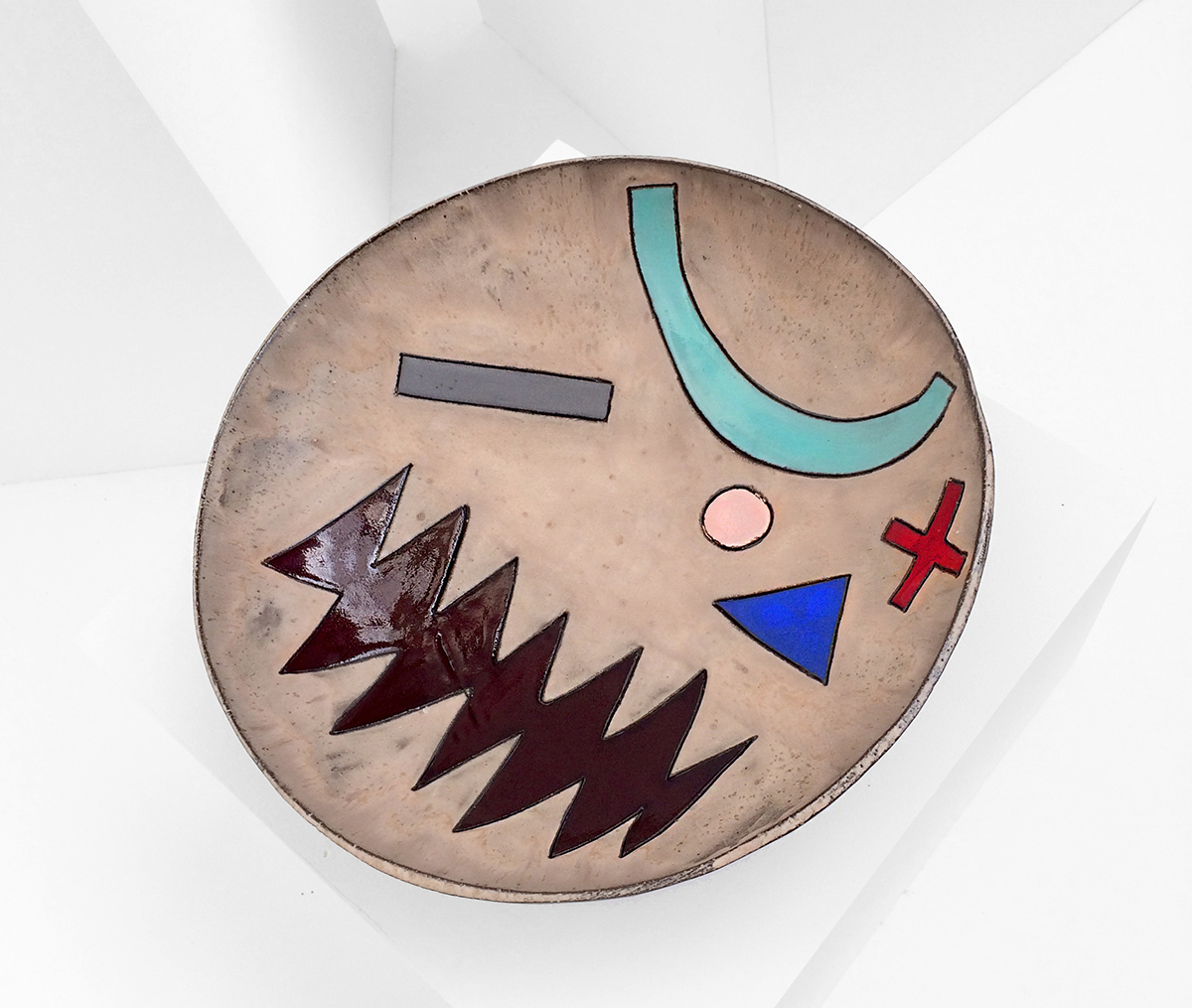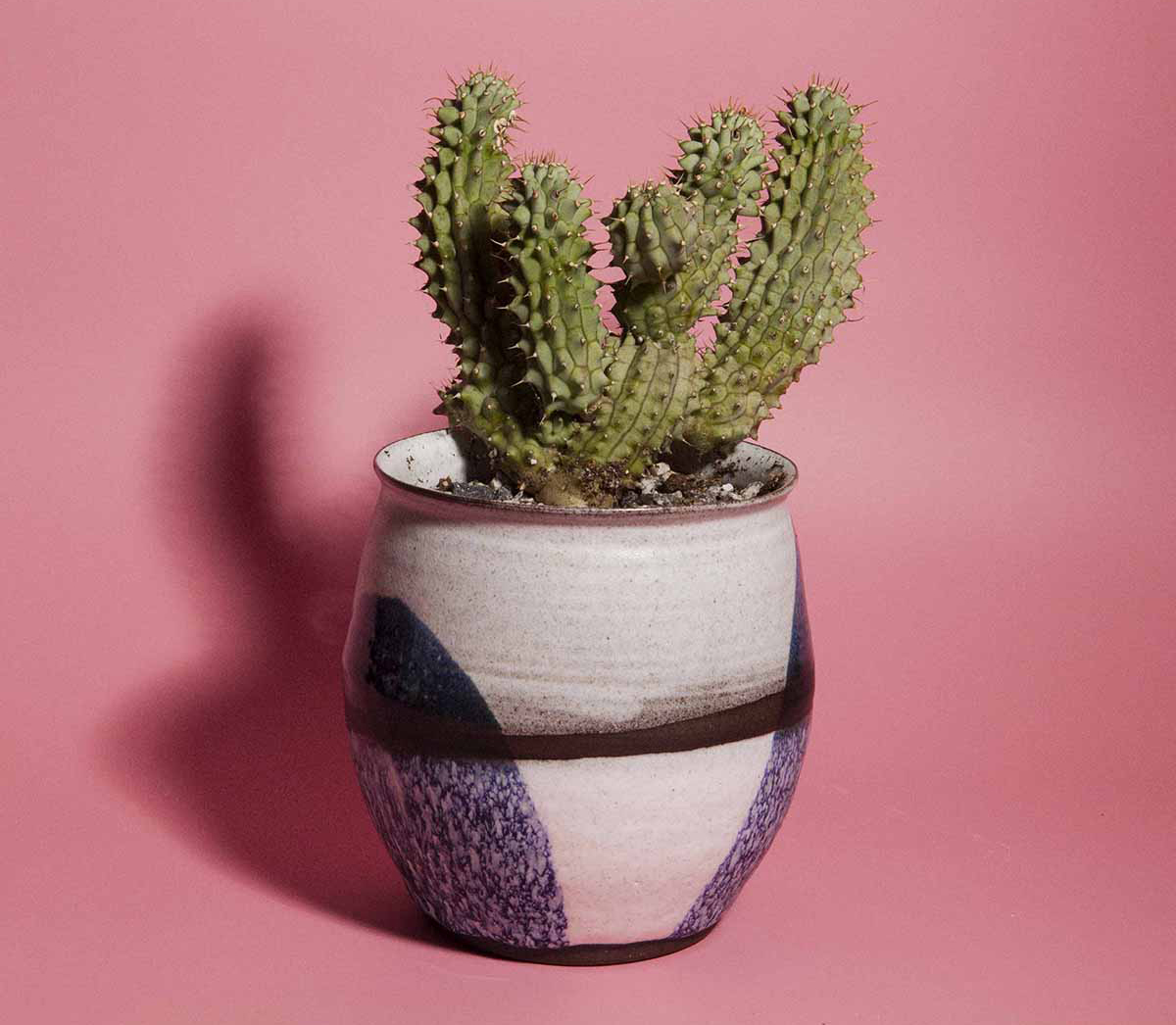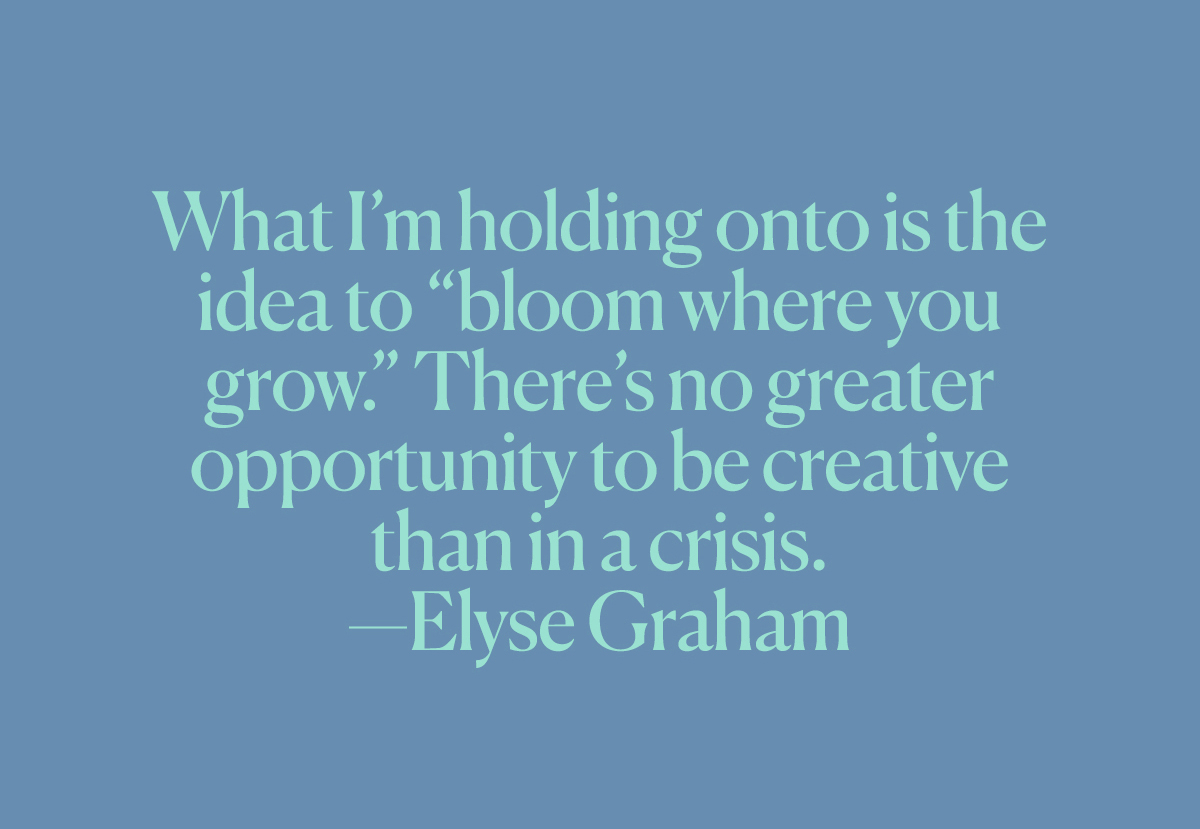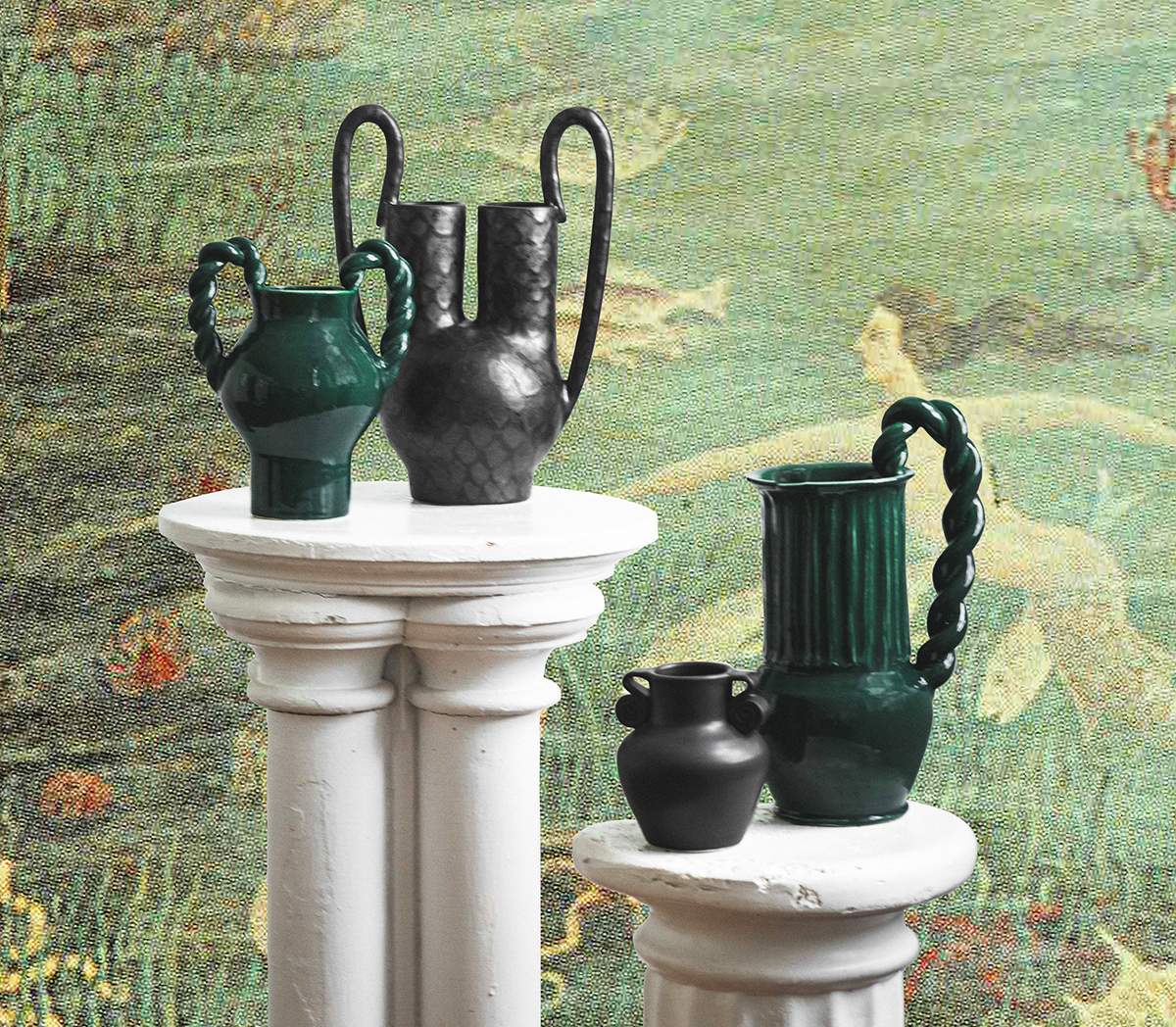
07.12.22
Q+A
Aimee McLaughlin On Starting a Ceramics Podcast (Pot-cast?) and Why Ceramics is Like Therapy
Though Aimee McLaughlin, of Objet Aimée, is drawn to the shapes, proportions, and details of antiquity, there’s nothing dusty about her ceramics. With a voracious curiosity and thoughtfulness, she re-contextualizes and refreshes classical forms: She’ll make the earthy naturalism of a speckled stoneware pot more romantic with twisted handles; render a pitcher that evokes fluted Greek columns in a satisfyingly deep, glossy green; or achieve a beautifully tonal black-on-black pattern of snake scales for the serpent-shaped arms that adorn a sinuous, double-headed vessel.
Originally from Atlanta, McLaughlin initially thought she “was on a textile path” and moved to New York after college to get started in that industry, until the reality of that sunk in. “I was working for a few interior designers and I think I just wasn’t anticipating that textile design would mean sitting at a computer all day,” she says. Searching for something different, she took a clay class during a studio residency at The Textile Arts Center in Brooklyn and got hooked. Getting serious about ceramics led to some re-evaluation about where she wanted to be and what she wanted to be doing. Four years ago, McLaughlin relocated, with her partner, to Portland, Maine, where she currently has her ceramics practice.
Since 2020, she’s also been co-hosting The Slip Cast, a pottery podcast (pot-cast? They love a good pun) with Los Angeles-based ceramicist Clare McGibbon of A Ways Away. They’ve gone in-depth with Dina Nur Saati of Nur Ceramics, Josephine Noel of Recreation Center, and Lalese Stamps of Lolly Lolly, to name just a few guests. Through the podcast, McLaughlin has been able to talk aesthetics with other artists and it’s also helped her navigate the material challenges and emotional doubts of making her own practice viable.
In a conversation over Zoom, we spoke about her process, the enduring allure of the amphora, the intimate appeal of everyday objects, how ceramics is like therapy, and what to listen to when you’re alone in the studio for hours on end.
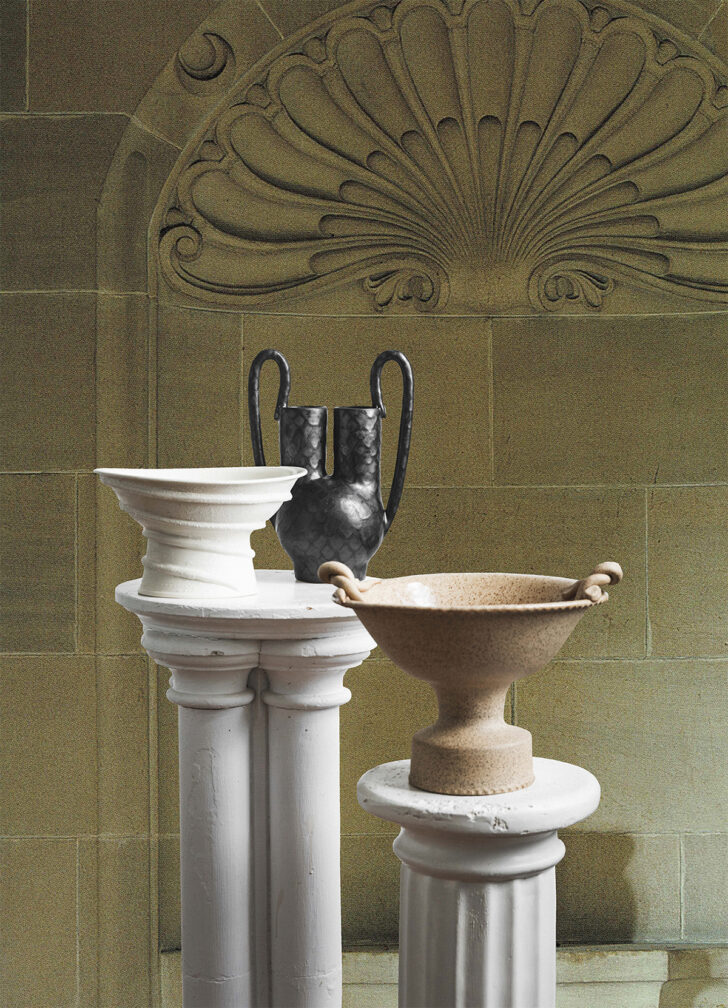
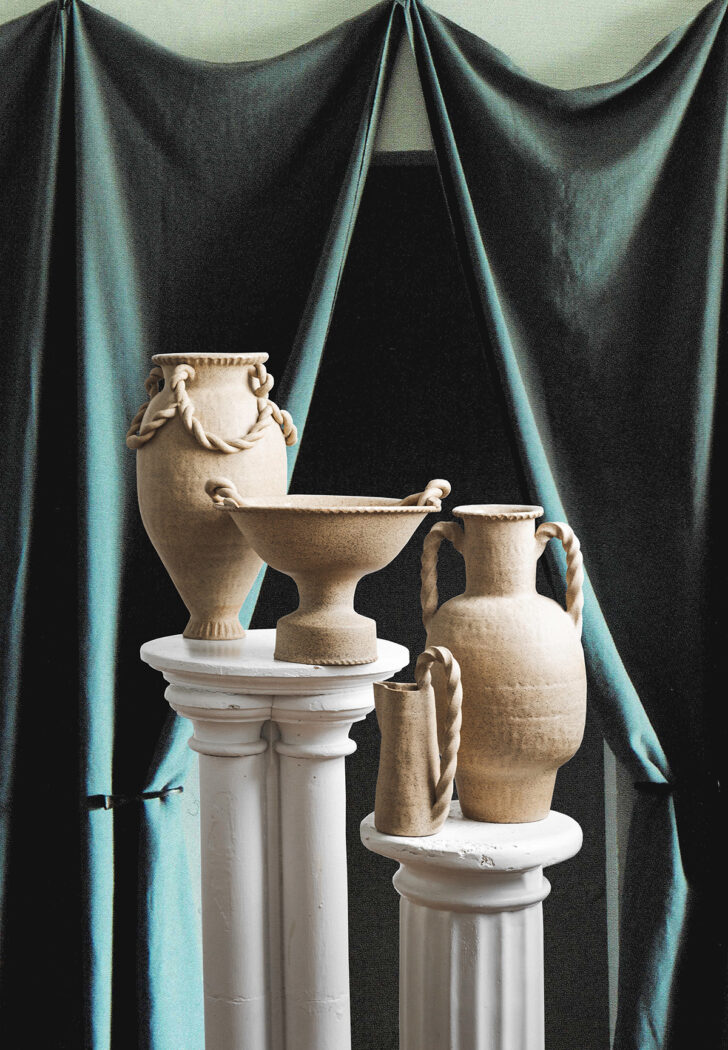
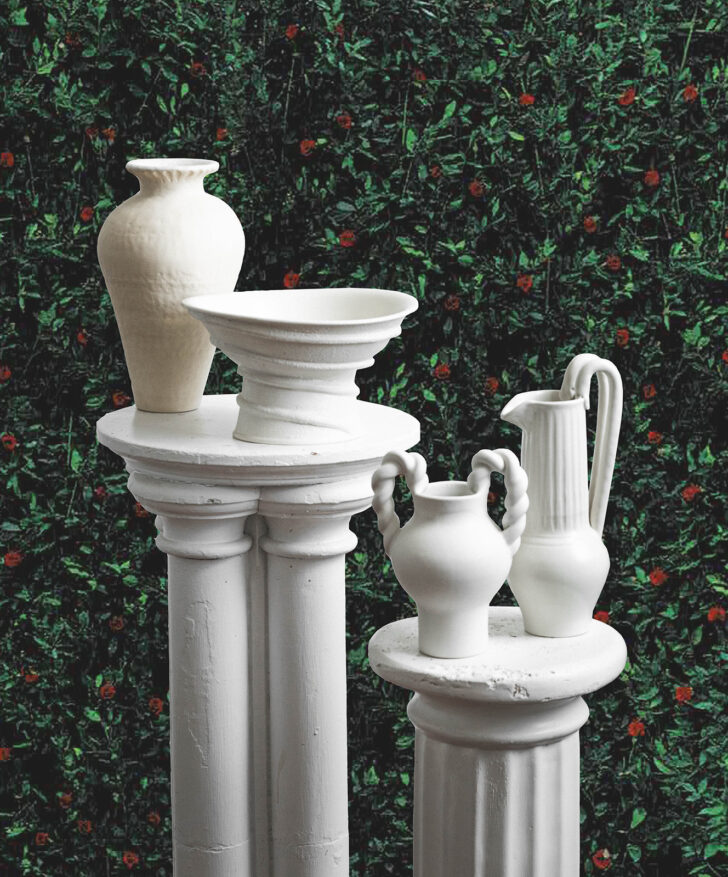
Do you think your background in textiles influences your ceramic work or are they totally distinct for you?
I feel like both of those are true. I do love surface design. I’ve always been trying to add that surface interest into my work without it becoming overly painterly, because I don’t really consider myself to be a painter. With clay it’s so nice because you can add a physical surface to something, where it doesn’t have to be painted. So, I think it’s about surface and textural qualities and those sorts of things – I’m definitely still interested in it from textiles, but it translates in a different way for the ceramics.
But one of the things I love about both of those art forms is that they’re so functional. And that they’re intimate objects and things that we touch and use every day. I’ve always felt much more attracted to work that is around you and in your home and not necessarily up on a pedestal or up on a wall.
The vessels that you make, do you think of them as objects or functional pieces or both?
I like to think of them as both. They’re definitely functional and also hopefully beautiful. There’s that quote from Elsie de Wolfe, the interior designer, about how she just wants to make everything around her beautiful and that will be her life. I like the idea of having beautiful objects around you, and not that it’s overly designed or that it has to be something expensive, but just for things to be pleasant and beautiful. I also grew up in a house with a hoarder, so I think a lot of my design aesthetics came from, like, a lack of beauty. So, I really wanted, now, to create a space that’s visually appealing and comfortable to be in.
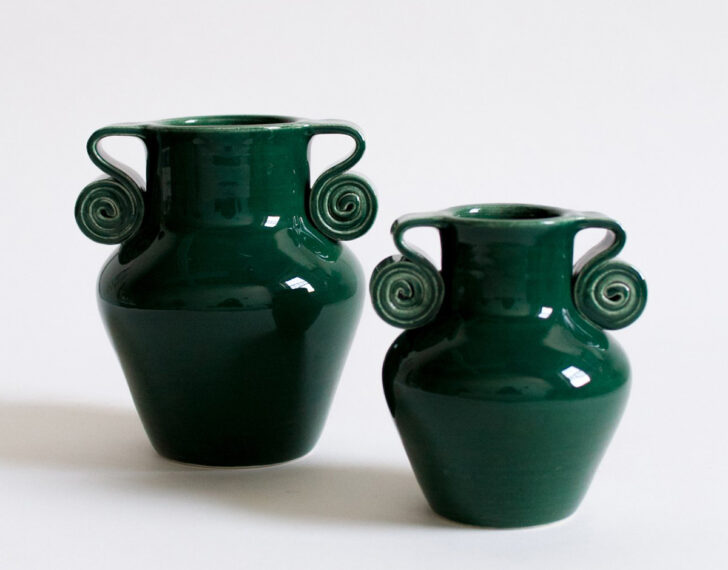
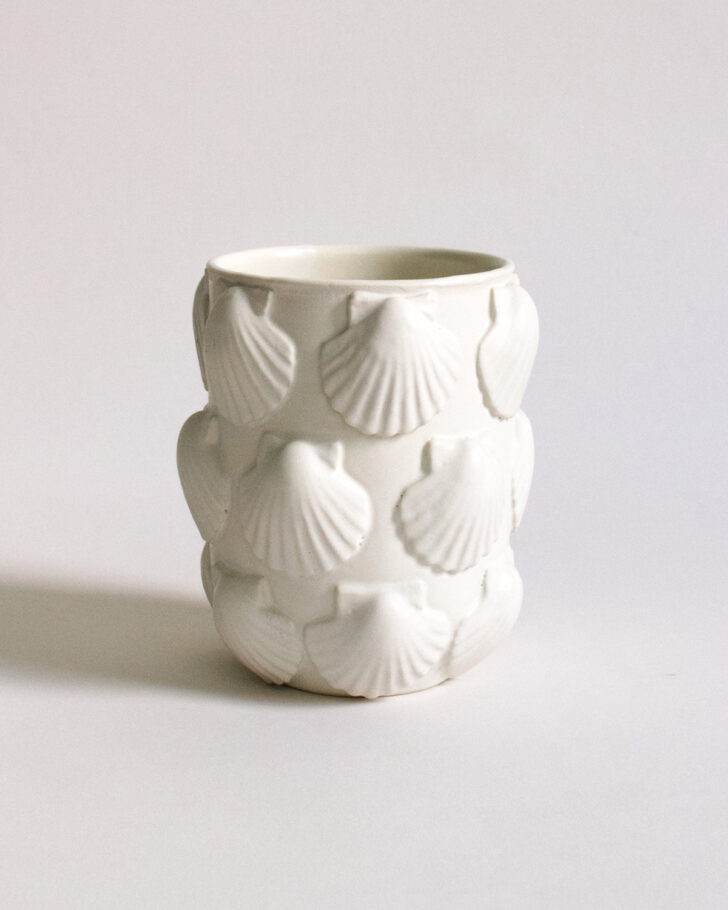
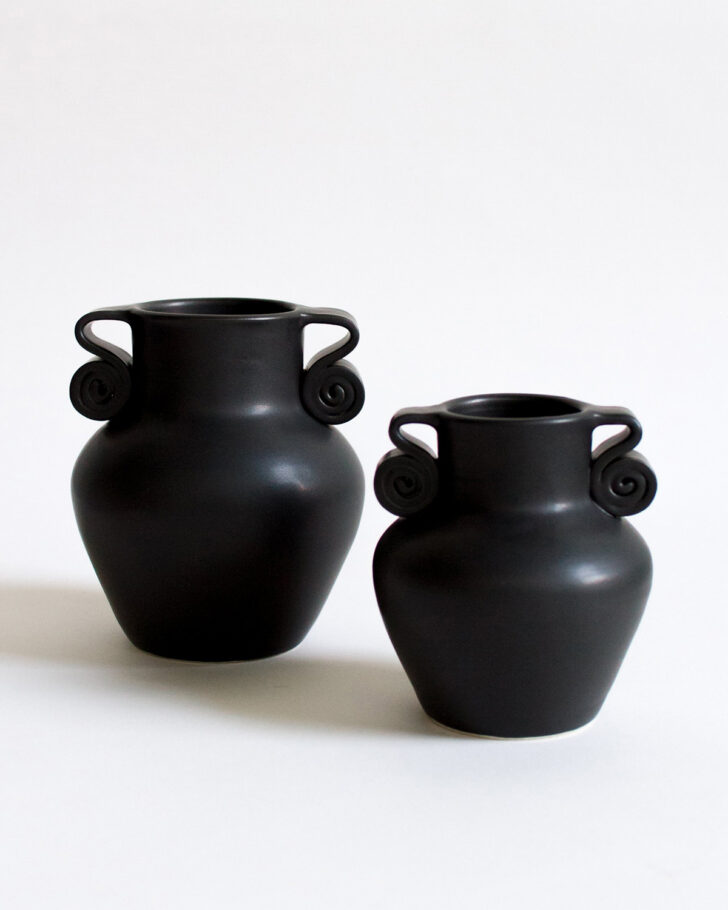
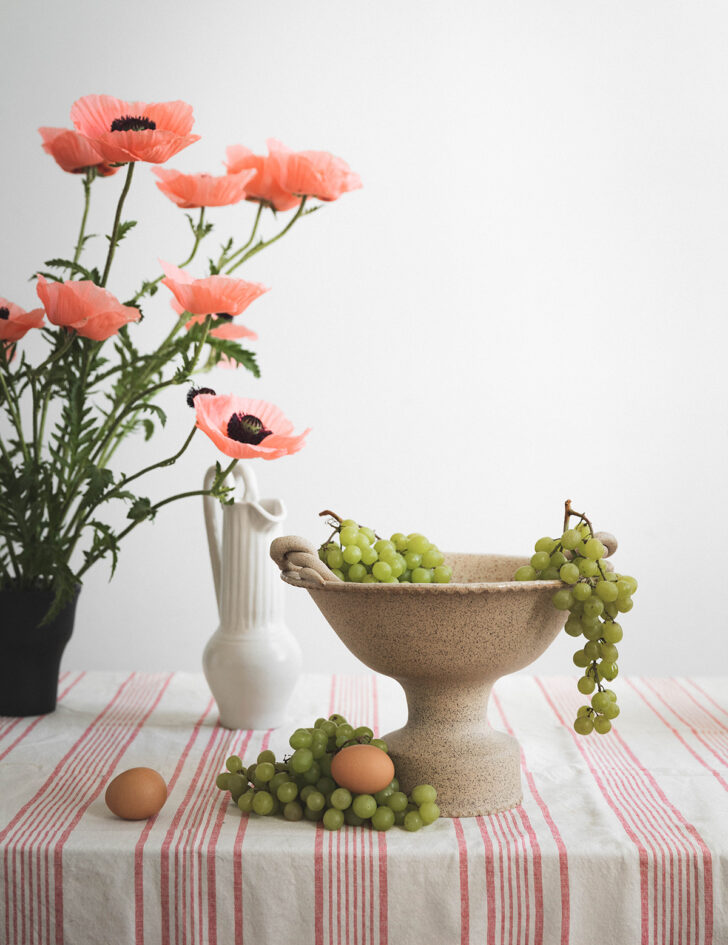
You were talking about a textural element — is that something that you get through glazing or through the material itself? Some of your pieces are high gloss and some of them have that really nice rough texture.
Most of that is from the glazes. The speckled stoneware, that’s just the raw clay body. And then I have one glaze that I’ve been working on, it’s typically called a lava glaze, where it has a bit of this almost crustacean feeling, like someone’s pulled it out of the depths of the ocean. And then I have a mottled black glaze, where what I did was dip it into the glaze and then let it dry and then painted on a wax and then the wax resisted a copper wash. It’s a bit layered. Earlier this year I did a ton of tests with all my glazes and different oxides, which are mostly still metallic but it’s like a wash that you can put on either under or over or without glaze. So that copper oxide on a white glaze comes out green, but on a black glaze it has that kind of metallic sheen. Chemistry is wild.
I’m also very excited I’m taking a glaze chemistry class this summer. I didn’t study ceramics academically so a lot of what I know about glazes is from working at a studio and researching recipes and talking to people. I’m excited to understand more of how to alter glazes and really what’s happening in the chemistry. Hopefully my glaze game will get a little better!
In terms of shape and form, how do you decide what a piece is going to look like?
I definitely pull a lot of inspiration from ancient pots from all different cultures. I’ve thought about it a lot because sometimes I feel like I’m just reiterating ancient people’s work but I also am so curious about how these shapes have just continued to be pleasing even though so many things have changed over time, that we’re still – or at least I’m still – attracted to that same amphora shape, that it continues to bring so much pleasure after all of that time. And I love thinking about the people who made those shapes initially and what their lives were like and how different we are now and I’m still in a studio in Maine making an amphora.
I’ve also been thinking a lot about and looking into – I don’t even know why I’m so into this – animal forms on pots and pots becoming the shape of animals. I’ve seen a lot of pots in the shape of birds and I’ve been really enjoying snakes. And pulling them out of reality to give them a different energy.
I also like Surrealism a lot. I like to turn things upside down, just a little bit, if I can.
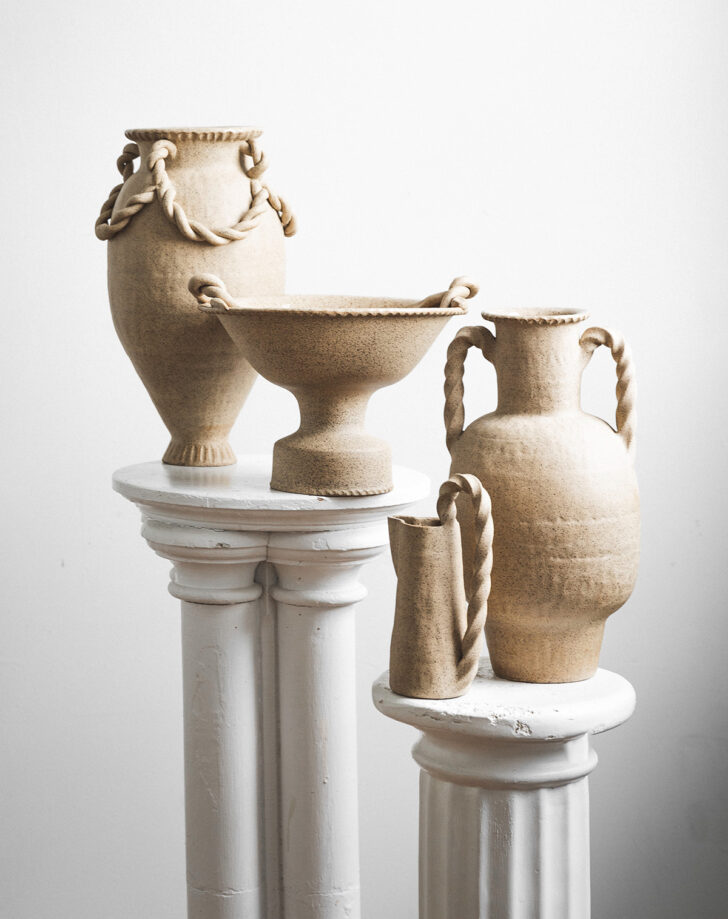
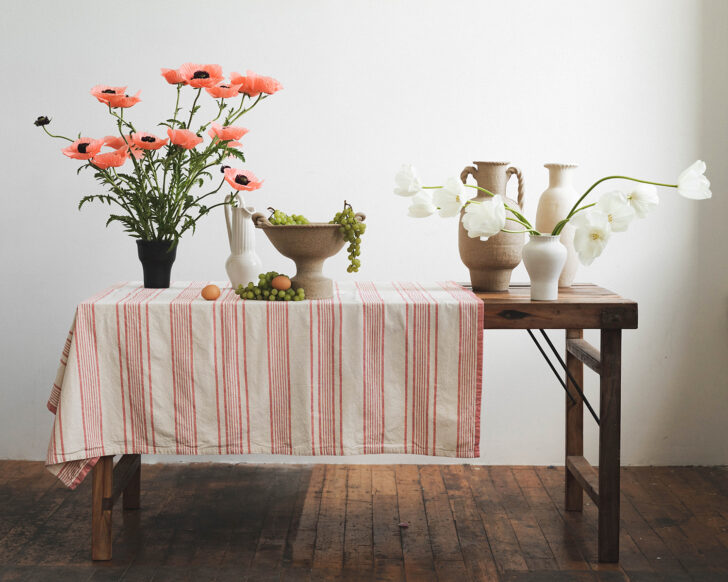
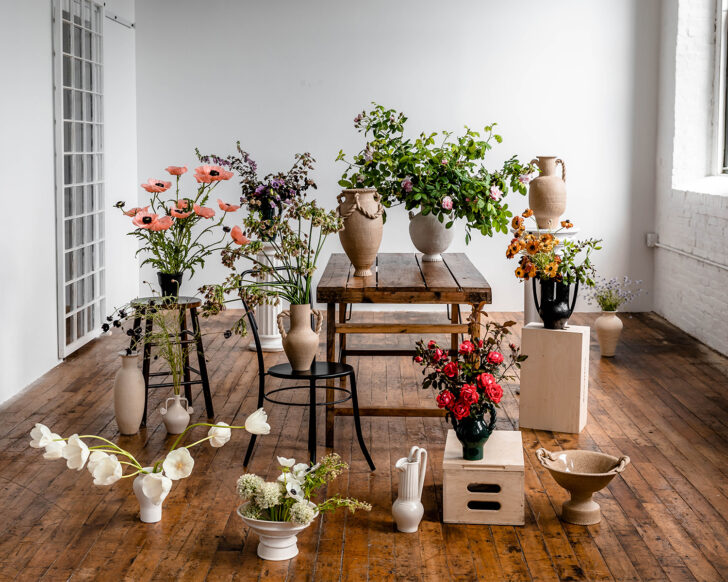
Above photo by Jenny Bravo / flowers by Field Floral Studio
When it comes to color, how do you approach that aspect of your work?
I have so many glaze colors that I’ve been trying to make work for a long time, so a lot of it is what works. I’ve been trying to find a lavender for three years and none of my tests have come out well! Most of my glazes now are from recipes that I found and it’s mostly instinctive: If I like a color I’ll test it. The process, at least in the way that I do it, takes a lot of time, so I feel that my colors are still a bit limited in a way. But I just started working with this really bright orange-red almost poppy color which is really exciting because I don’t have that many bright colors. It’s been nice to push a little bit against the neutrals.
Most ceramicists, I think, have those moments of heartbreak, when they can’t get the color they want, or a piece went into the kiln and didn’t come out the way they’d envisioned. How have you handled that?
Ceramics is like therapy in a way. You have to learn how to deal with heartbreak and failure. It’s high highs and low lows. And really learning to not be attached to anything, even though it’s very difficult to do, especially if you invest a lot of time into a piece. Now that I’ve been doing it for longer, I think I’m better at being okay with something going wrong, especially because it’s just inevitable. You’re bound to get a crack here, you’re bound to have something crawl there, even glazes that are very stable, one day you’ll just open the kiln and it’ll be strange and you don’t know what happened and you have to work backwards to figure all these things out. That’s something that’s been wonderful about having these Slip Cast conversations – it happens to everyone. You know, it’s not necessarily my fault or their fault or any error of your own. But yeah, it’s a great practice of non-attachment.
Working with clay is so lovely. One of my favorite things is that is has a memory, clay does. If you accidentally hit it or if you move your hands in a way, sometimes it’ll remember that in the kiln when the heat is on and it’s moving. And then it also supposedly absorbs emotions. I don’t know. People have done a lot of studies about it. But both of those things sound wonderful to me.
Also, it’s just earth. I haven’t done any wild clay mining. There are a lot of people who do. Someday I can’t wait to just go dig clay out of the earth and then make things the whole way through, the whole process. Then you have this even more individual and unique object because it’s found clay. So… one day!
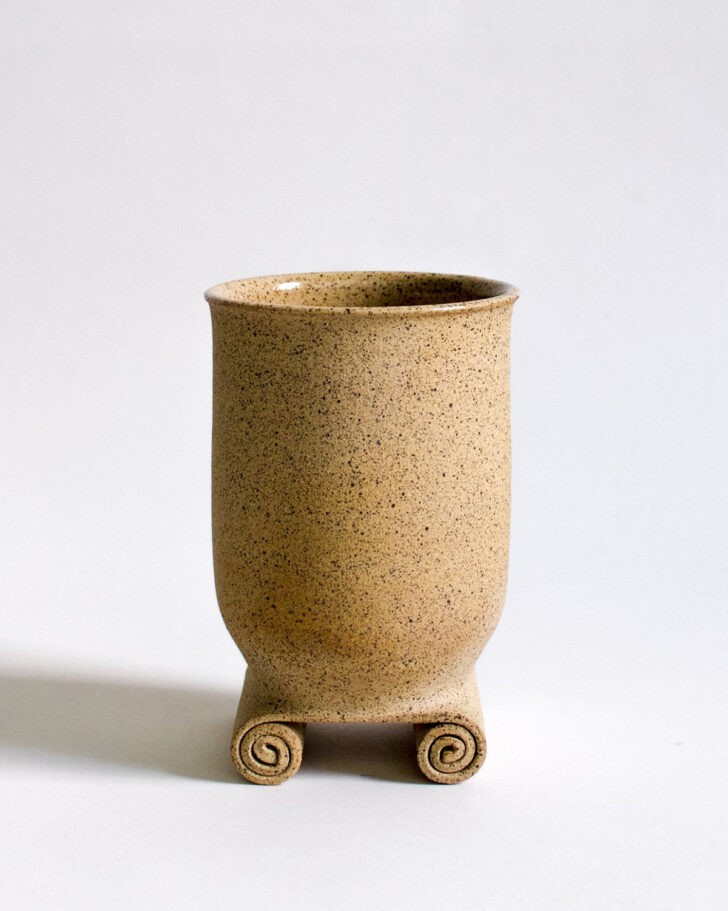
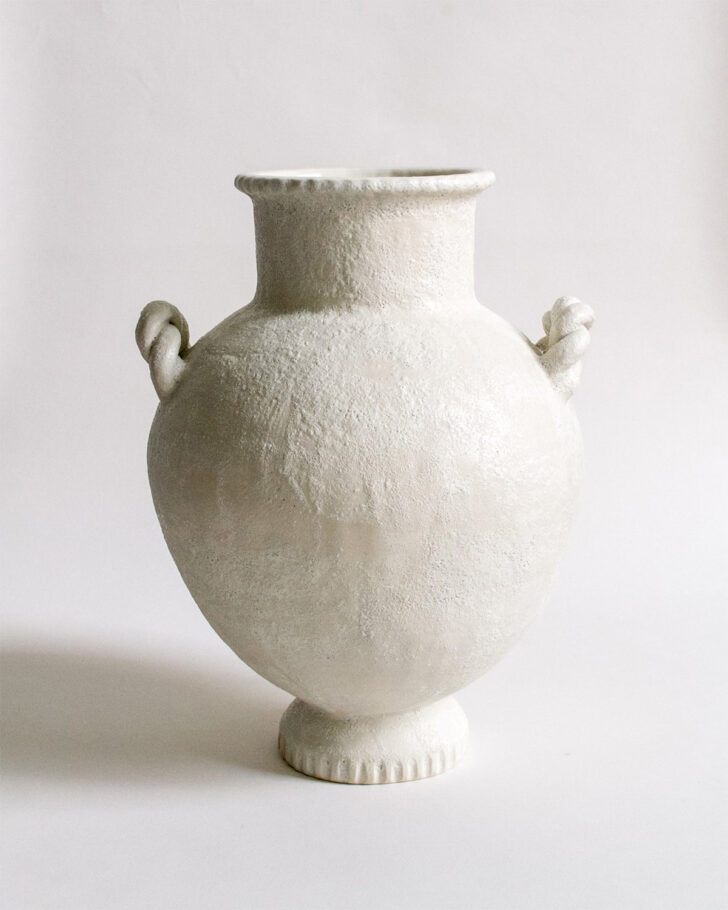
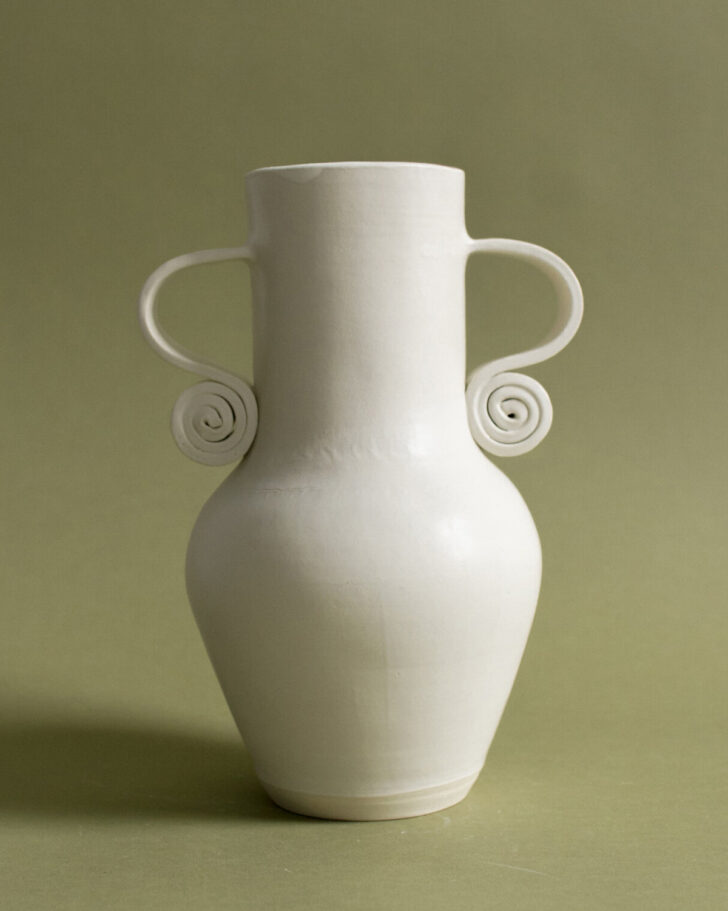
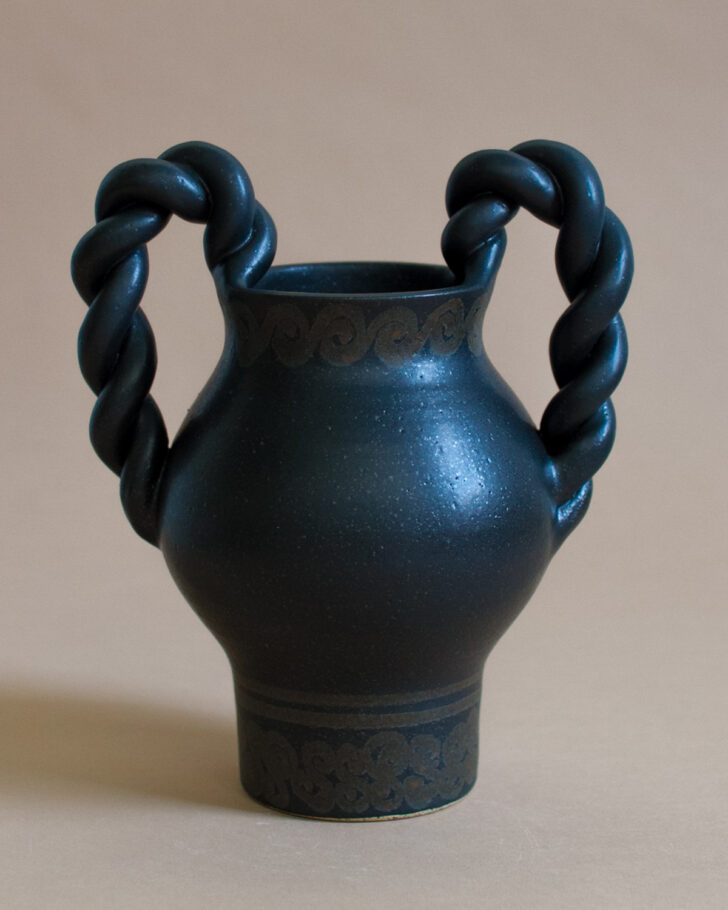
What’s been inspiring you lately?
I’ve really been thinking a lot about – and I think this is where the snake references are coming from – I was raised as a Southern Baptist and so the Garden of Eden creation myth, whatever you believe, is really what I thought was true for a very long time. And I just always felt so much for Eve. She was really the only female archetype that we had and I was l always a bit confused as to why knowledge would be such a bad thing. So, the idea of the serpent, the Garden of Eden and tree of the knowledge of good and evil and all of those things, I think about it a lot and it sort of aligns with all the mythological and ancient vessels.
And snakes or asps also have that ancient Egyptian connotation. Do you find yourself reading about the Garden of Eden, interpretations of it, or is it more what you learned growing up?
I was always a skeptic… so I don’t delve into the bible much nowadays. But even just the idea that all of this shame was put on women from the get-go. It’s so interesting to me, the idea of knowledge now, in the way that we incorporate it, we’re just inundated with it all the time and I do wonder is that good or bad? Do I need to listen to the news? Is it bad to not engage with all of it? We’re at an intense moment of information coming in at all times and what would it have been like, if “Eve didn’t eat the apple” – if that parallel universe would exist somewhere. I’ve been thinking about that a lot.
Switching gears, though I guess it has to do with acquiring knowledge, how did you decide to start The Slip Cast with Clare?
I was listening to so many podcasts and at the time there were only a handful of ceramics podcasts and I felt like I either wasn’t hearing the information that I was interested in or the format didn’t feel great to me. And we do these long-form, very conversational podcasts. It’s pretty low-key, we only do them every other week and we’re not even always great at doing that. It’s a lot of work! I wasn’t expecting it to be so much work. But it’s also been really lovely to get to talk to people I’d love to speak with about this sort of thing, like what is their practice like and how are they influenced. And just get to ask questions that the Internet doesn’t always [answer], or [that] it feels weird not to know someone and ask those questions. So, it’s a nice format. Clare and I actually met at a studio in New York and she moved to L.A. and I moved to Portland at the same time so we were also kind of missing that community studio feeling.
Do you feel that doing the podcast has influenced your own practice?
Yeah, I do. It’s sometimes oddly strange, there was one week when – I go through this a lot, but I’m like, what am I doing, can I even do this anymore? Maybe I should refocus my energies, make this more of a hobby – and we had done two interviews that week and both people just believed that they could do anything. Maybe the universe was telling me that I needed to hear that. And also, just the way a lot of people are really generous with information. I’m not great at finance things but the few nuggets that I’ve garnered have been through conversations with people. It’s also just fascinating, because I have struggled quite a bit with making this practice viable, to hear from people who have been doing it for so much longer and also still struggle. That things aren’t polished and dandy all the time. It feels a bit more honest and it brings me back to reality in a way, instead of living in that comparison culture. You can have an honest conversation with someone about behind the scenes.
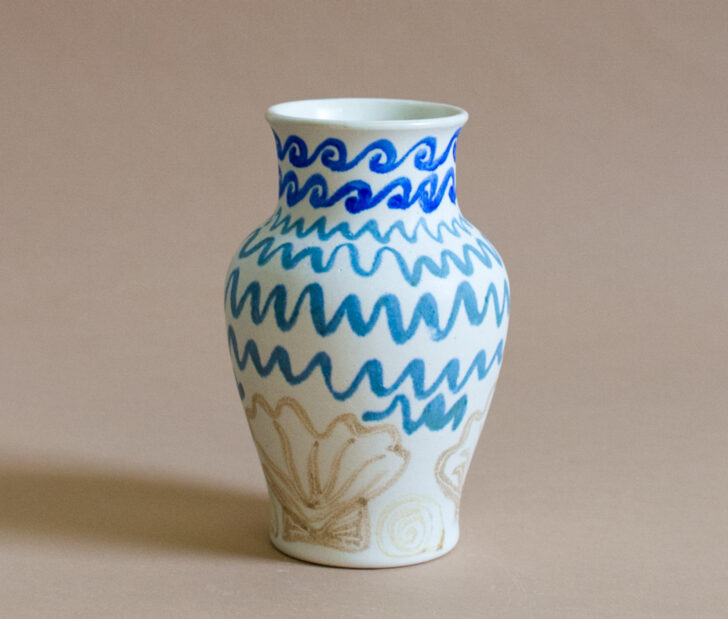
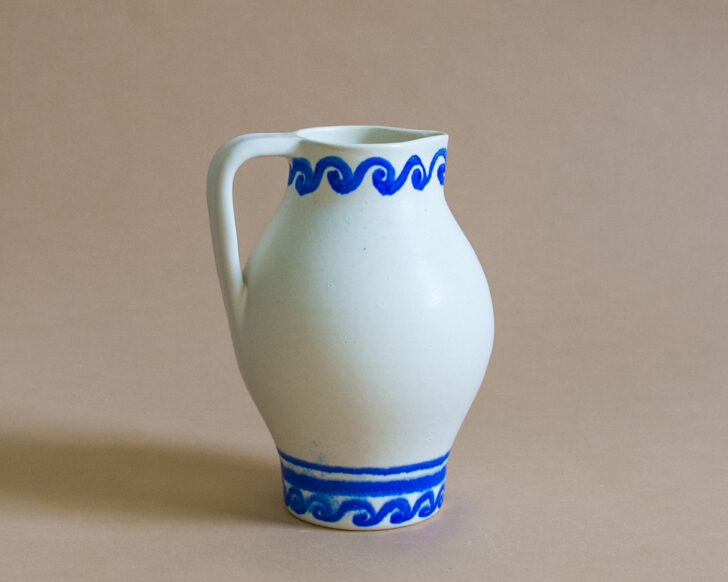
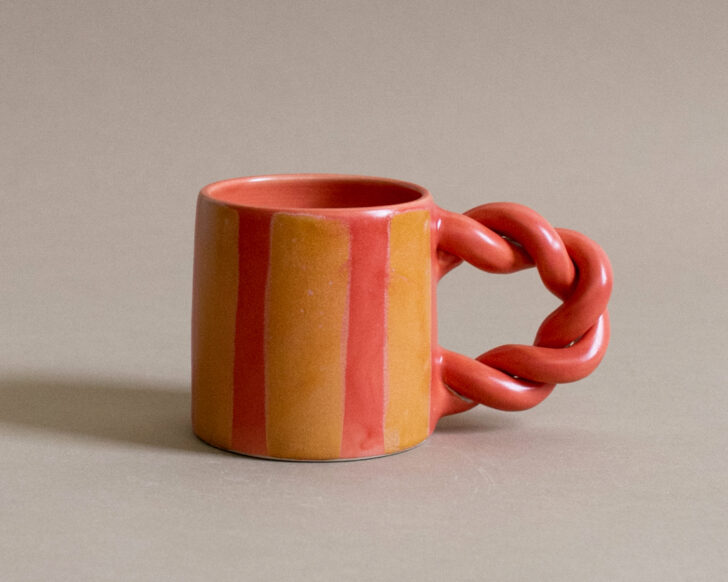
That’s great. Especially because so much of the time financial stuff, the economics of it, gets glossed over.
And it’s also that classic “overnight success” thing. You see that someone’s doing really well but you don’t necessarily know about all the drudgery or the sacrifices that went into making that one beautiful thing happen. It’s always nice to hear about that experience as well. That most of the time people have been working really hard. The fact that people are so dedicated. That’s always helpful to hear from people who I admire.
What podcasts do you listen to while you’re working?
I’ve been trying, for mental health reasons, to listen to funny podcasts lately. I really like this new podcast called Ridiculous Crime. It’s like hijinks and capers and people who do really silly things. One of their taglines is 99 percent murder free, 100 percent ridiculous. So, it’s true-crime-esque, but very funny. And I listen to a lot of “Conan O’Brien Needs a Friend.” That one’s really good. I’m running out of podcasts, so I’ve been listening to a lot of audiobooks lately to supplement, which has been helpful.
Do you have a particular kind of audiobook you like?
I’ve been listening to a lot of mythology books. There’s this one called Circe that I’ve just relistened to. And there’s a British comedian who did a few books all about the mythological characters and he narrates it himself… Stephen Fry! They’re so good if you like Greek mythology. They’re each 15 to 20 hours long, so it’ll last me at least a few days in the studio. House of Names is another one, by Colm Tóibín.
And what are you working on next? What’s your long-term vision?
That’s a good question… I’ve just finished a bunch of orders for shops. I sent more work to Lolo NYC. And then a shop in Hudson, Hops Petunia Floral. I sent some ashtrays and incense burners to Tetra and I’m refilling an order for Fredericks and Mae. There’s a shop in Australia I’ve worked with called Jolie Laide and we’re trying a new made-to-order option with a couple of vases.
The summers are generally a more creative time period for me than the winters are even though I have more time to work in the winter, which can be frustrating. I’ll probably try to make more large-scale pieces. A lot of the things that I throw on the wheel all end up being about 8 to 12 inches, so I always like having a bit more height and volume.
Would you have to do that not on the wheel?
People can do it on the wheel. I don’t have the physical strength to throw [those] pieces. I think my maximum on the wheel is 6 pounds of clay. But people can throw up to 50 pounds of clay on the wheel. That’s a hurdle I would maybe like to reach but I just don’t have the arm strength right now. So, a lot of those larger pieces are coil-built. It’s a much slower, more meditative process. Those are the sorts of pieces where if they go wrong, it’s more heartbreaking because you’ve invested so much time. But they’re really enjoyable to make.
I’m always kind of flying by the seat of my pants to be honest, trying to figure out what works next. I wish I had a better answer! I think that is one thing I’m trying to work on – having plans instead of winging it all the time, that might be helpful. I’m working on it.
